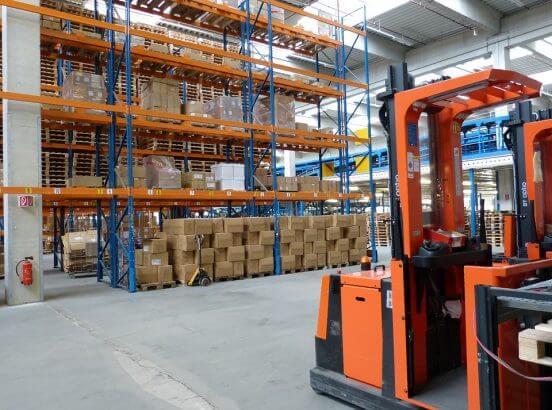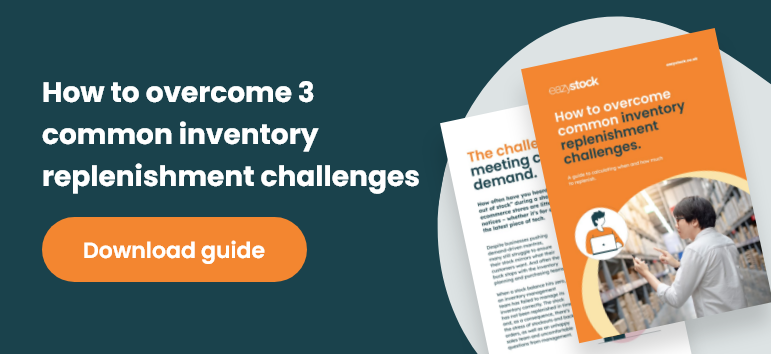High inventory levels: overcoming the challenge
High inventory levels: a problem for everyone
Small and mid-sized businesses (SMBs) often ignore high inventory levels. Either they don’t have enough time or human resources to address the challenge or they don’t have the right tools for the job. But surprisingly, high inventory levels aren’t only a challenge for SMBs; large enterprise corporations are fighting similar battles. In fact, imbalances in inventory occur in companies of every size and in every industry.
Most companies don’t realize the costs they could eliminate or the capital they could potentially release that is tied up in excess inventory. However, depending on the circumstances, there can also be advantages to having high inventory levels. This dilemma makes it difficult for workers in purchasing or inventory management to decide how to best manage their inventory control.
 So what’s the solution? Is there a simple way to manage inventory levels? Inventory management is a complex challenge with no universal solution. Let’s take a look at some of the factors contributing to high inventory levels in companies across the board.
So what’s the solution? Is there a simple way to manage inventory levels? Inventory management is a complex challenge with no universal solution. Let’s take a look at some of the factors contributing to high inventory levels in companies across the board.
Are there advantages to maintaining high inventory levels?
High service level
Inventory management is a constant balancing act between minimizing inventory costs and guaranteeing delivery capability to ensure high customer service levels. To achieve that balance, you need methods and tools that can give you a complete overview of your entire stock.
By calculating and evaluating your supply chain Key Performance Indicators (KPIs), you’ll realize that are advantages to high inventory levels. Large unexpected orders can be fulfilled quickly since there is so much inventory on hand, and your customers will be happy with the speedy delivery. A happy customer is a repeat customer, with follow-up orders that can form the basis for long-standing business relationships.
Plus, by placing larger orders for inventory replenishment, the price per unit will decrease and you spend a smaller percentage on delivery costs, in comparison to higher delivery costs for small or urgent orders.
Disadvantages of high inventory levels outweigh the advantages
Many companies maintain high inventory levels because they result in high service levels. With every item you could possibly need already on hand, you’re able to better service your customers and send orders out quickly with no risk of run-out. However, this kind of inventory management results in excess inventory and obsolete stock piling up, and eventually you start running out of space or capital for needed items.
Maintaining high inventory levels also results in other negative consequences. High stock levels result in a heavy cost burden. Not only does the actual inventory itself tie up capital, but it also requires more maintenance costs. A lot of personnel will be required, making salary expenses and incidental wage costs rapidly accumulate. Other costs like warehouse rent, energy and water, maintenance, amortizations, development of storage facilities, insurances, and cleaning also grow as inventory levels grow.
 Those high inventory levels burden the company further through immense amounts of tied-up capital, incurred interest, and the resulting lack of liquidity. Since the capital that is tied in stock cannot be used elsewhere (for potentially more important investments), opportunity costs also arise.
Those high inventory levels burden the company further through immense amounts of tied-up capital, incurred interest, and the resulting lack of liquidity. Since the capital that is tied in stock cannot be used elsewhere (for potentially more important investments), opportunity costs also arise.
Competition increases
Weighing these advantages and disadvantages isn’t the only challenge to your inventory management. Your inventory management also faces challenges externally. For instance, coordinated processes and interfaces are required for all parties within the supply chain: suppliers, wholesalers, and customers. If a single link in the supply chain negatively impacts the flow of goods and information – e.g. through incompatible interfaces – the performance of the entire supply chain can suffer.
Modern distribution operations accelerate goods turnover. Competitive pressure rises. Already, flexible solutions such as just-in-time production and urban logistics concepts achieve a new level of supply replenishment. Therefore, it’s imperative to avoid high, inflexible stockpile and the resulting high costs.
The solution: software for inventory optimization
All things considered, the disadvantages of high inventory levels outweigh the advantages of low inventory levels. Keeping inventory levels high in order to boost customer service levels is a costly and temporary solution. Eventually, excess inventory and obsolete stock will accrue, ruling out long-term success and leading to financial issues.
But how can you manage the delicate act of keeping enough inventory on hand to keep your service levels high? The solution: modern inventory management software. The best systems reduce your inventory levels by determining appropriate order quantities while simultaneously improving product availability through exact order planning and optimized, automated stock replenishment. All this is done through advanced analysis and demand forecasting, allowing you to regain control of all your inventory processes and be one step ahead of your competition.








